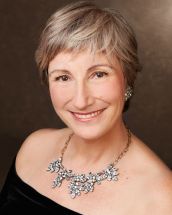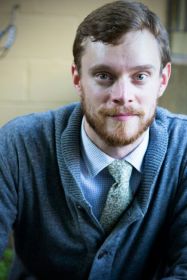By Peter Alexander
Conductor Cynthia Katsarelis and her musical colleagues—the Pro Musica Colorado Chamber Orchestra, the Colorado Masterworks Chorus and three outstanding soloists—presented a joyful and enjoyable performance of The Creation by Joseph Haydn last night (Oct. 29).

Amanda Balestrieri
This was the first performance of the 2016–17 season for Pro Musica, and the only the second outing for the Masterworks Chorus, a new entry into Boulder’s crowded classical music scene. The well matched soloists appearing with them were soprano Amanda Balestrieri, tenor Steven Soph and bass-baritone Jeffrey Seppala. Following a performance Friday in Denver, last night’s performance was in Boulder’s First United Methodist Church.
With the chorus on the broad but shallow sanctuary “stage,” the orchestra had to adopt an unusual seating arrangement, with woodwinds behind the strings on one side, brass behind the strings on the other. In a more complex work with tricky coordination among the winds this might have been a problem, but in this case it seemed to work quite well. The woodwinds in particular sounded bright and clear. In the church’s shoebox space the brass had to be restrained to avoid thickening the texture, but for the most part they succeeded.

Jeffrey Seppala
The long, deep space of the church favors the lower frequencies. The timpani, for example, had to be discreet to avoid muddying the sound, and usually succeeded. Katsarelis visually restrained the players throughout, generally keeping the orchestra and singers well balanced and the texture transparent.
The choral sound was solid and clear, even with all forces combined, as in the final fugue to the words “The Lord is great, his praise shall last for aye.” While the words from the chorus were not always understandable, the audience had the full text and the lights were, appropriately, left on.
This also benefitted the soloists, who were not always understandable, either. This is not entirely the singers fault, however: it is hard to be clearly understood when singing lines like “Softly purling glides on thro’ silent vales the limpid brook,” or “Most beautiful appear, with verdure young adorn’d, the gently sloping hills.” For this you can blame the Austrian Imperial Court Librarian, Baron Gottfried van Swieten, who wrote Haydn’s English text. Alas, his command of the language was not as fine as he thought.

Steven Soph
All three soloists should be commended for their performances. They have fine oratorio voices and sang their solo recitatives and arias with careful attention to expression. One of the highlights was surely the duet between Adam and Eve—Balestrieri and Seppala—with chorus, “By thee with bliss.” Likewise, their lengthy closing duet “Graceful consort!” drew a spontaneous “Bravo!” from the audience. And I could not suppress a chuckle at Seppala’s solemn delivery of the text “In long dimension creeps with sinuous trace the worm,” one of many delightful moments of text painting in Haydn’s score.

Joseph Haydn
One of the hallmarks of Katsarelis’s performances with the Pro Musica has been her careful control of dynamics. From the pianissimo whispers in the “Representation of chaos” and the fourth-day sunrise, to the full climaxes, the large-dimension contours were highly effective, with something held in reserve for the major climaxes. This was particularly evident at the end of the oratorio’s Part I, the much-sung chorus “The heavens are telling,” and the final “Amen.”
Finally, I have to return to Haydn, the genial genius whose lifelong humility and ability to learn paved the way for this great work. Inspired by the London Handel Festival performances of the 1790s, he wrote in his 60s a work unlike anything he had done before—to our eternal benefit. To quote the oratorio’s final chorus, “Let his name resound on high!”
